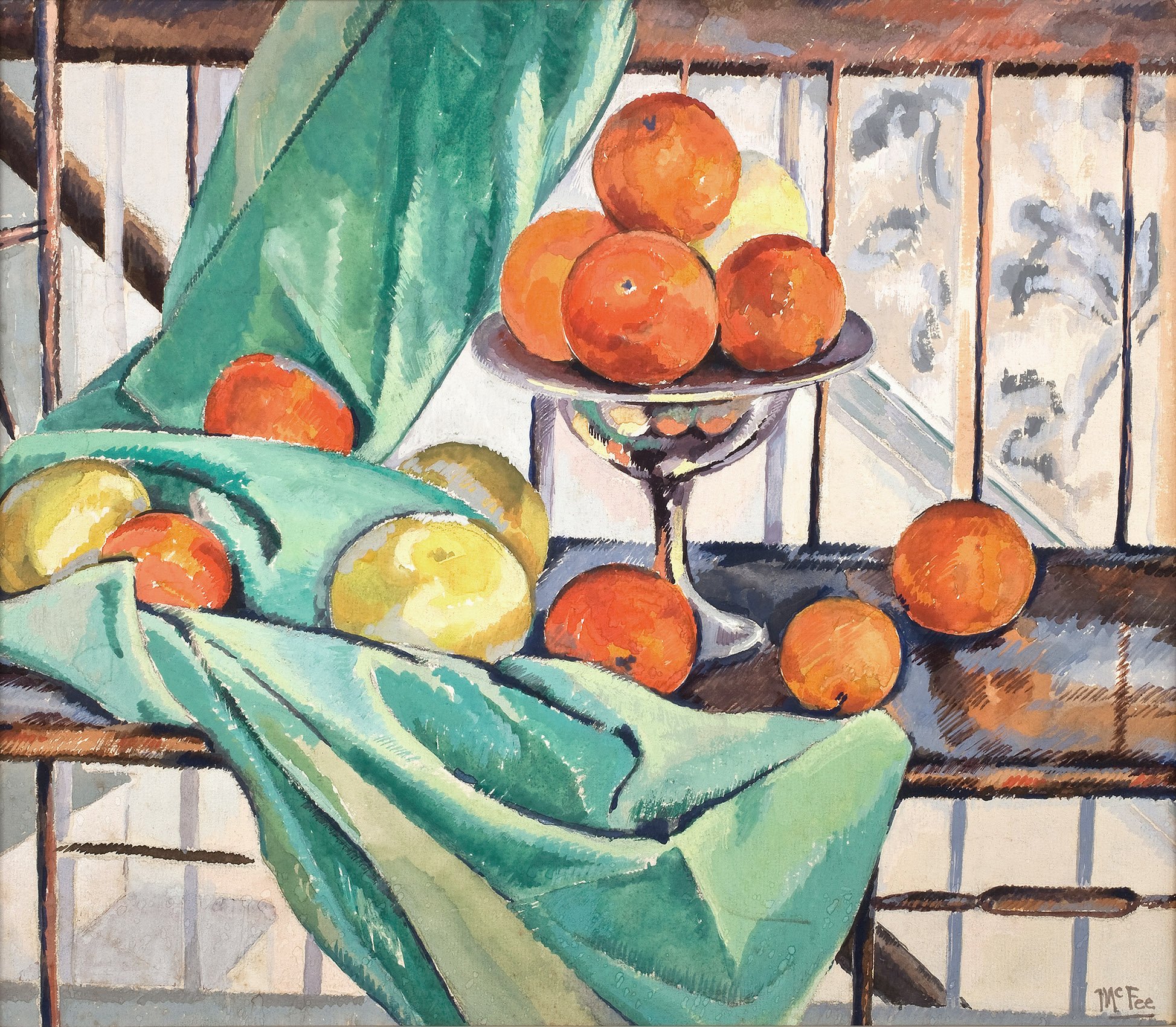HENRY LEE McFEE (1886-1953)
Available Work | Biography
Biography • Henry Lee McFee (1886-1953)
Henry Lee McFee was born in Saint Louis, Missouri, in 1886. McFee’s father was a ship designer and his mother was a cousin of the Pittsburgh industrialist Henry Lee Mason. McFee attended the Kemper Military Academy from 1902 until his graduation in 1905. McFee’s formal art training began at the School of Fine Arts in St. Louis, after which he took a job as a surveyor. He was able to quit this job at twenty-one when a trust from Henry Lee Mason enabled him to paint full-time. McFee enrolled at the Stevenson Art School in Pittsburgh where he spent one year. He then spent two summers in Birge Harrrison’s landscape class at the Art Students League in Woodstock where he enjoyed the town so much he stayed through the winter. McFee learned of Cézanne through fellow Woodstocker Andrew Dasburg who traveled to Paris in the spring of 1909 and returned in 1910 to Woodstock strongly impressed by Cézanne. Working with Dasburg inspired McFee to begin experimenting with abstraction and color.
McFee participated in his first group exhibition at the MacDowell Club in New York in November 1913 with six modernist works, including an abstraction titled Exercise. His participation in the MacDowell exhibition put him in the public spotlight, and future invitations to show his work followed. In 1916 McFee exhibited six Cubist paintings which showed his interpretation of Cézanne and Picasso in an exhibition of American modernist art at Forum Gallery in New York. McFee exhibited in Paris at the Galerie Georges Petit in 1920 and then traveled through France in 1921. McFee returned to Woodstock focused on still lifes which he exhibited in a one-man exhibition at the Rehn Gallery in New York in 1927. Rehn Gallery went on to represent McFee for the rest of his career with further solo exhibitions in 1929, 1933, 1936, and 1950. During these years, institutions such as the Detroit Institute of the Arts, the Cleveland Museum of Art, the Metropolitan Museum of Art, the Saint Louis Museum of Art, and the Whitney Museum of American art acquired McFee’s paintings for their collections.
McFee traveled to Santa Fe in the winter of 1926 to see the landscape his good friend Andrew Dasburg painted each winter from 1920 to 1928. Studio Still Life: Pewter and Gold is a still life of Dasburg’s studio resulting from this trip. McFee returned to the area in 1940 when he received a Guggenheim Fellowship to work in the South and Southwest.
After living in Woodstock for two decades, McFee traveled south to Savannah in 1936 with the intention of opening his own art school. The project never came to fruition so he moved to San Antonio, Texas in 1937 to teach at the Museum School of Art at the Witte Museum, becoming its director in 1939. He went on to become a professor at the graduate school of Claremont College, California in 1942 where he lived until his death in 1953.
